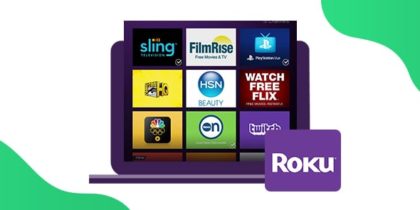Developed by search engine giant Google, QUIC is a new protocol to make the internet not only faster but also more reliable and secure. However, considering that it’s still experimental, should you use the protocol?
Find out that and more about below:
What is the QUIC protocol?
Quick UDP Internet Connection, or QUIC, is a new encrypted internet transport protocol designed to make HTTPS traffic faster, safer, and more efficient. It combines all the best elements of TLS encryption and TCP connections and implements them on UDP. The ultimate goal of QUIC is to replace TCP and TLS on the web.
Related Read: TCP vs UDP

What is QUIC used for?
Since the QUIC protocol offers low-latency communications, it’s often used by bandwidth-intensive apps and services. This type of protocol is ideal for streamers, downloaders, gamers, and anyone who uses VoIP in their daily lives.
Here are some ways QUIC improves your online sessions:
Shorter connection establishment times
The client and the server have to complete a TLS handshake and share encryption keys to establish TLS encryption. There are a series of requests involved, making it a ‘lengthy’ process. Extra steps are added to it when the data is sent over TCP and this slows down the connection even further. In comparison, the QUIC protocol only needs a single handshake to create a secure connection.
Improved performance if packets are lost
One of the main issues with HTTP/2 over TCP is head-of-line (HoL) blocking – this occurs when a bunch of packets are held up by the first packet. If a packet is lost in transit, the recipient has to wait for it to be recovered, which significantly affects connection performance.
With the QUIC protocol, streams of data make it to their destination independently. This means they don’t have to wait for the missing packet to be repaired and retrieved.
Stable connections when changing networks
If you’re connected to a web server using TCP and switch your network (like from 4G to Wi-Fi), the connection will time out and need to be reestablished. The QUIC protocol facilitates a smoother transition by assigning a unique identifier to each connection to a web server. These can be reestablished even if your IP changes by simply sending a packet instead of establishing a new connection.
Easier to develop and make improvements
Given that TCP is implemented in the kernels of operating systems, changing it is next to impossible. On the other hand, the QUIC protocol can be implemented at the application-level, which makes it more flexible than its predecessors.
How fast is the QUIC protocol?
So, is it worth selecting QUIC instead of the traditional TCP/IP connection we’ve used for years? In an online world where speed and performance is paramount, QUIC adoption rates are expected to rise over time. Google has found that TCP searches are one second slower than QUIC searches, so it wouldn’t be surprising if the age of QUIC arrives quicker than we expect.
The QUIC protocol provides multiplexing, which is what gives it an edge over its TCP counterpart. TCP creates a single connection between two endpoints, whereas QUIC uses multiple connections. If one of the streams of data is interrupted due to a poor connection or for any other reason, the multiple connection points will allow the streams of data to continue.
However, if a website is using TCP and the connection becomes disrupted, the first packet will hold up the rest of the data. Head-of-line blocking has long been an issue with TCP, and the QUIC protocol resolves it.
What apps use QUIC?
Believe it or not, Google has been laying the foundation for the widespread integration of QUIC since the early 2010s. Though the protocol is still under development, it’s already used by Google in the Chrome browser. All connections to Google servers are established using QUIC, which means all apps under Google’s umbrella are QUIC-based, such as Hangouts, YouTube, and Blogger.
The QUIC protocol is also being adopted by businesses that require a stable and fast connection to make their service viable. One good example is Uber – their mobile apps for iOS and Android use QUIC for low-latency data transfers. Less packet loss means a better and more efficient app, and that’s something the QUIC protocol can help with.
Are there downsides to the QUIC Protocol?
Yes, the QUIC protocol isn’t flawless. While it reduces latency and improves web communications, it’s still in its draft phase. Furthermore, QUIC is yet to be adopted by other websites and isn’t supported by firewalls and other cybersecurity tools.
They currently don’t recognize QUIC traffic as internet traffic, which is why it isn’t inspected or protected, leaving a huge loophole in your security. For this reason, it makes sense to block the QUIC protocol until it’s widely supported and adopted.
How Do I Block the QUIC Protocol?
Just delve into your firewall’s settings and you should have the option to disable QUIC. You can also disable the protocol in Chrome (it’s activated by default). Just follow these simple steps:
- Fire up your Chrome browser.
- Type chrome://flags/ in the address bar. You’ll be able to see all of Chrome’s experimental features.
- Look for the Experimental QUIC protocol option and choose Disabled.
Frequently Asked Questions
Is QUIC safe?
Safety has been one of the primary aspects in QUIC’s design and planning from the get-go. However, the protocol is still experimental and isn’t supported by cybersecurity tools. As such, you’re better off not using it for now.
Who uses the QUIC protocol?
Since QUIC promises low-latency communications on the web, it’s supported by growing a number of bandwidth-intensive apps and services. The protocol is becoming quite popular among streamers, downloaders, and gamers.
Closing Thoughts
QUIC comes with a number of benefits over its predecessors, with speedy connections being one of the most prominent. However, considering it’s experimental status and lack of support by firewalls, you should disable it for now (at least until the protocol becomes more widespread).
Got any questions? Feel free to use the comments section below, and we’ll get back to you as soon as we can!



